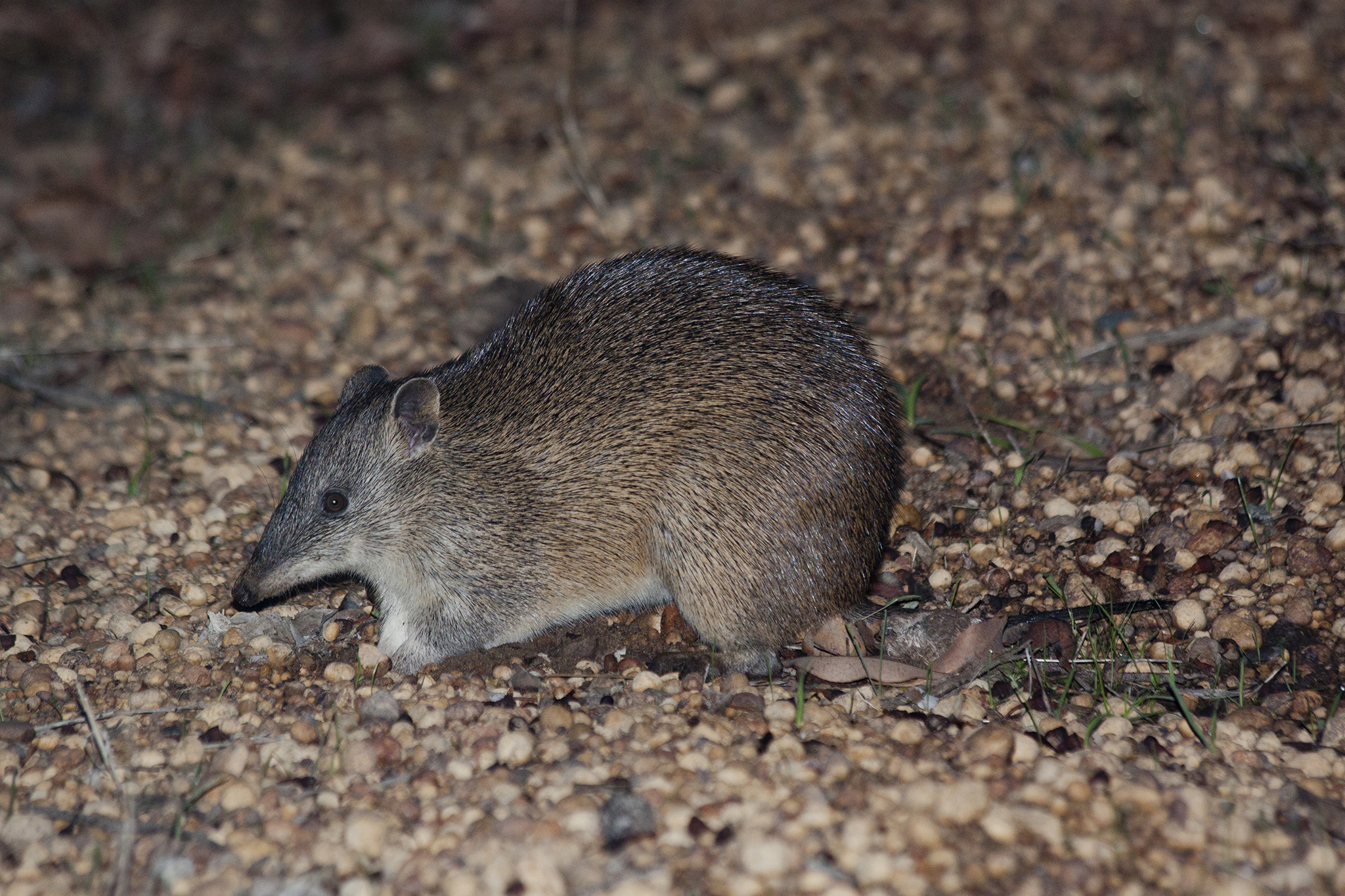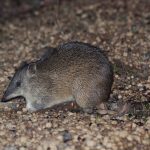Southern Brown Bandicoots
(Isoodon obesulus)
Another small, brown, ground dwelling mammal, the Southern Brown Bandicoot can best be identified by their long nose, small rounded ears, big bottom, and short tail.
DESCRIPTION
Southern brown bandicoots are small, nocturnal marsupials with backwards-facing pouches. They live in a variety of habitats, from heaths and woodlands to rainforests, preferring to build their nests from grasses and other plant materials in the dense vegetation of the understorey.
At night, they emerge to feed on insects, larvae, earthworms and plants. As they search for insects in the soil, they dig using their short powerful front legs to make small conical holes. These help with soil aeration and seed dispersal. Like many smaller native marsupials, southern brown bandicoots help keep the ecosystem healthy.
Males and females prefer solitary lives and establish home ranges that vary in size, depending on habitat. They breed up to four times a year and have the shortest gestation period (about 11 days) of any marsupial. They can give birth to up to five young which are under-developed and furless, measuring around 1cm when born, and take three months to live independently.
They tend to travel on all four feet, rather than hopping, but they will occasionally stand to check out their surroundings.
Unfortunately, since European settlement, land clearing and increased bushfires have combined with introduced foxes and cats to significantly reduce the distribution of southern brown bandicoots. In New South Wales these animals are listed as an endangered species.
Want to see southern brown bandicoots at Wildlife Wonders? Book here!






